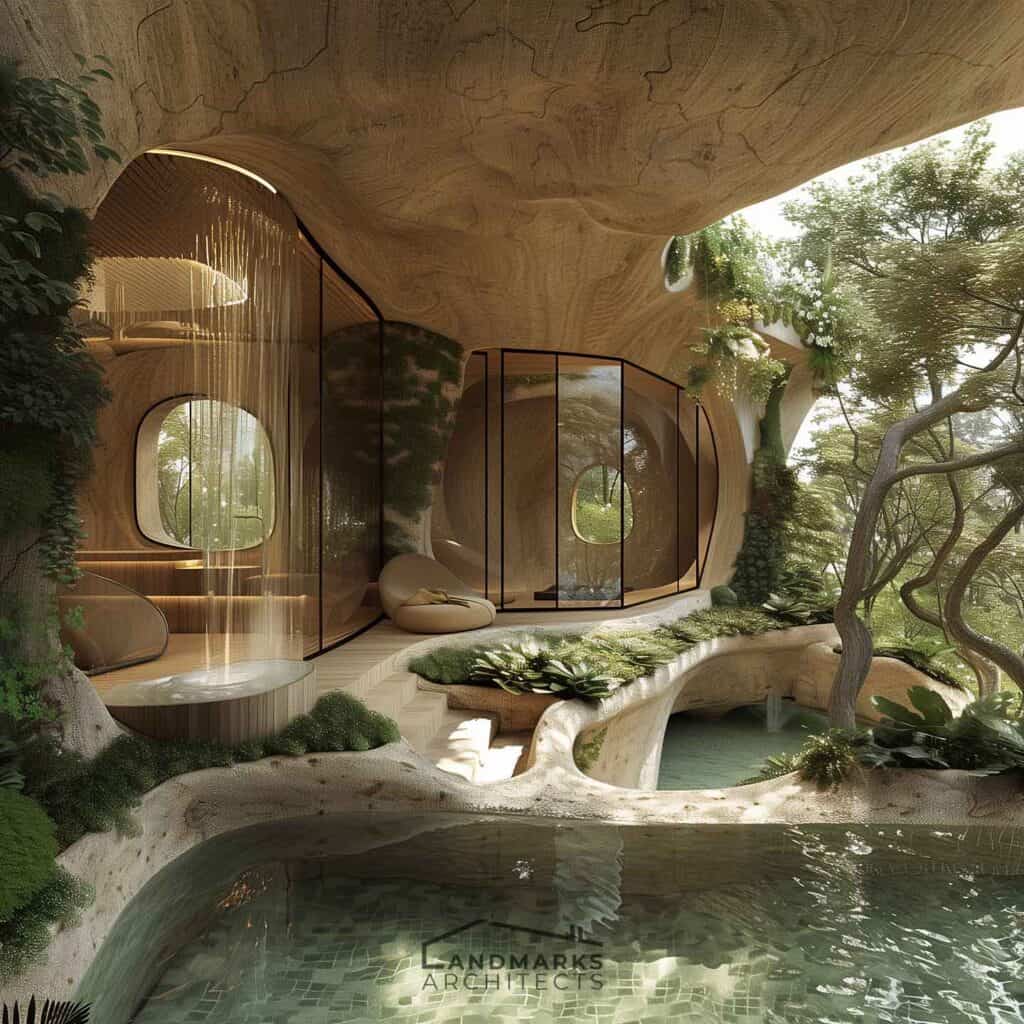
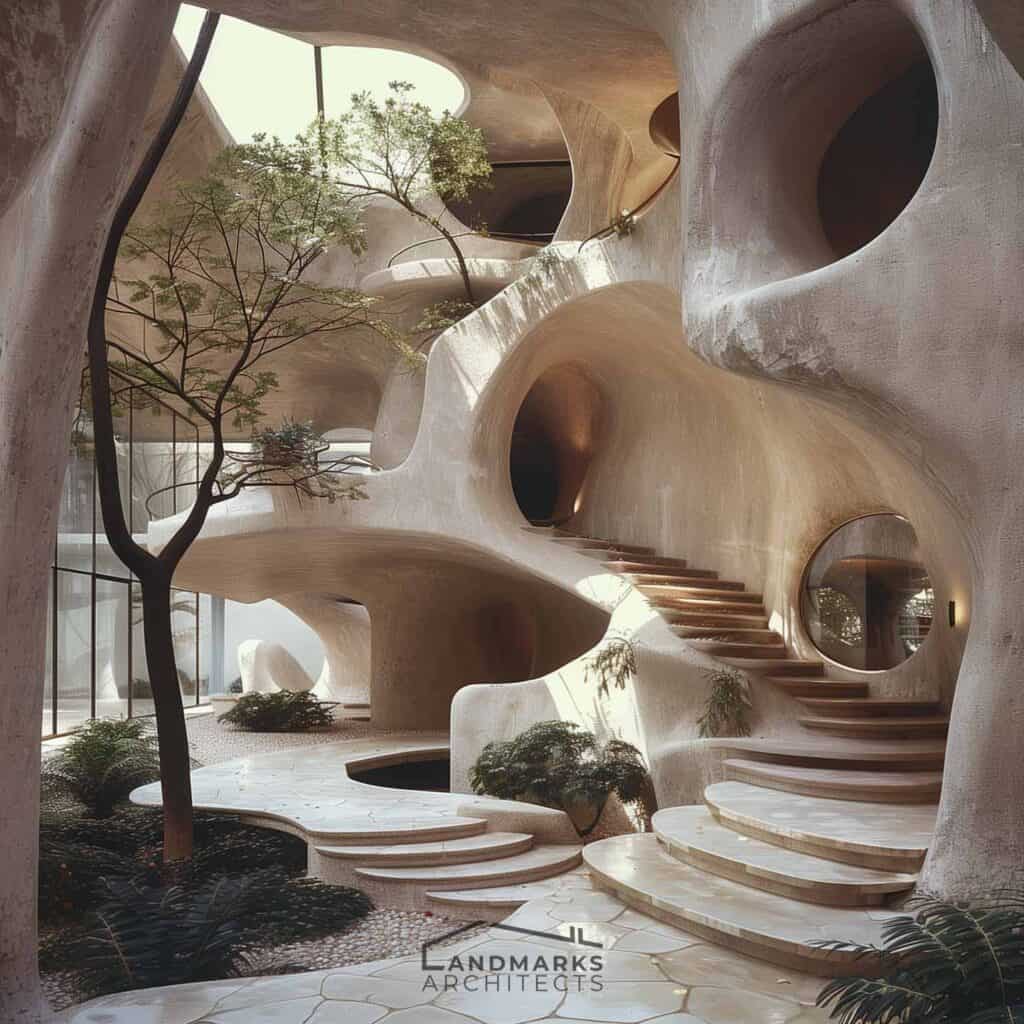
Welcome to our exploration of “Organic Form Architecture.” You may find yourself intrigued by the very concept of organic architecture, wondering what distinguishes it from conventional architectural styles. You might also ponder its origins, its significance in contemporary design, and how it harmonizes with the natural world.
Throughout this exploration, we will examine the philosophical underpinnings of organic architecture, tracing its roots to nature-inspired design movements and visionary architects. We will also explore the practical applications of organic architecture, from residential homes to public buildings, museums, and cultural centers. Additionally, we will discuss the environmental and aesthetic advantages of organic architecture, as well as the challenges inherent in its implementation.
What is Organic Architecture?
Organic architecture represents a departure from traditional styles by emphasizing harmony between built structures and their natural surroundings. At its core, organic architecture seeks to integrate buildings seamlessly into their environments, blurring the distinction between the man-made and the natural. This approach stems from a philosophy that views architecture not as separate from nature, but as an extension of it, with designs that reflect the inherent beauty and vitality of the natural world.
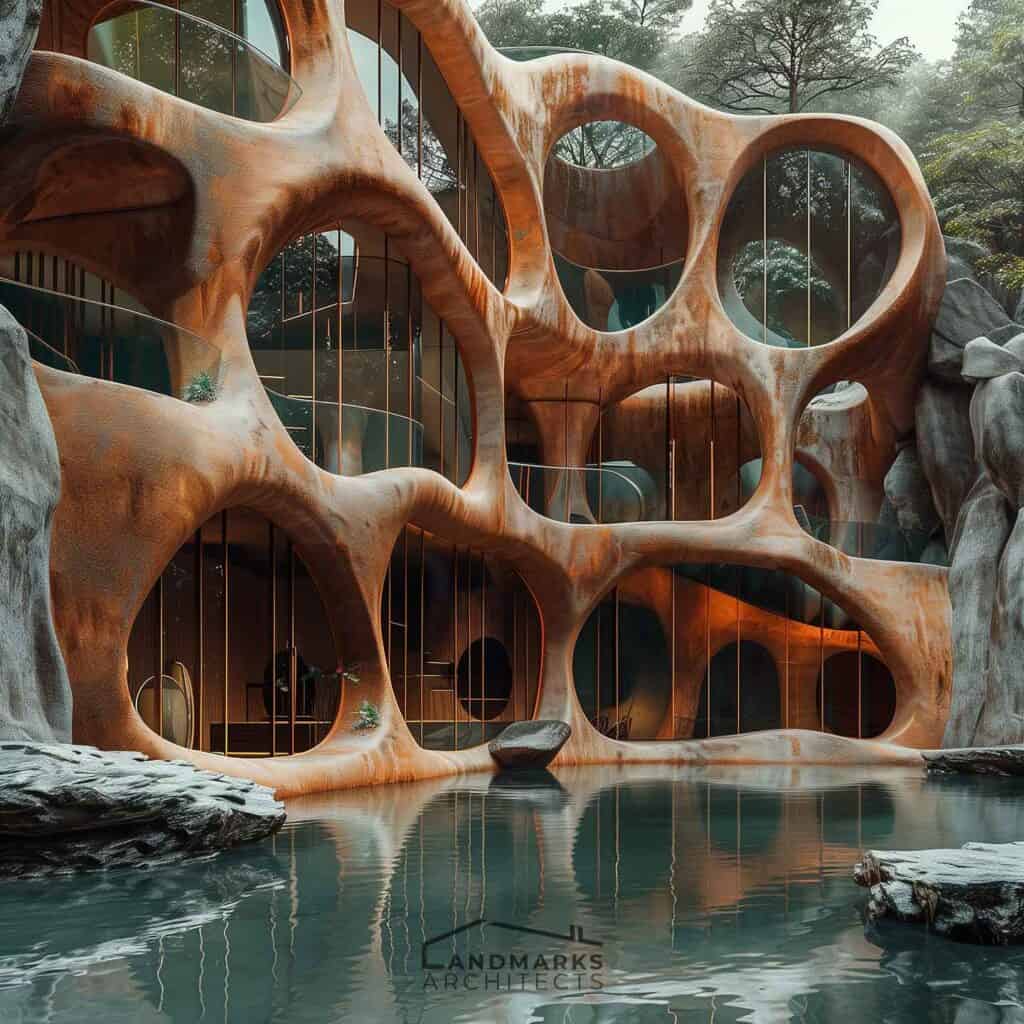
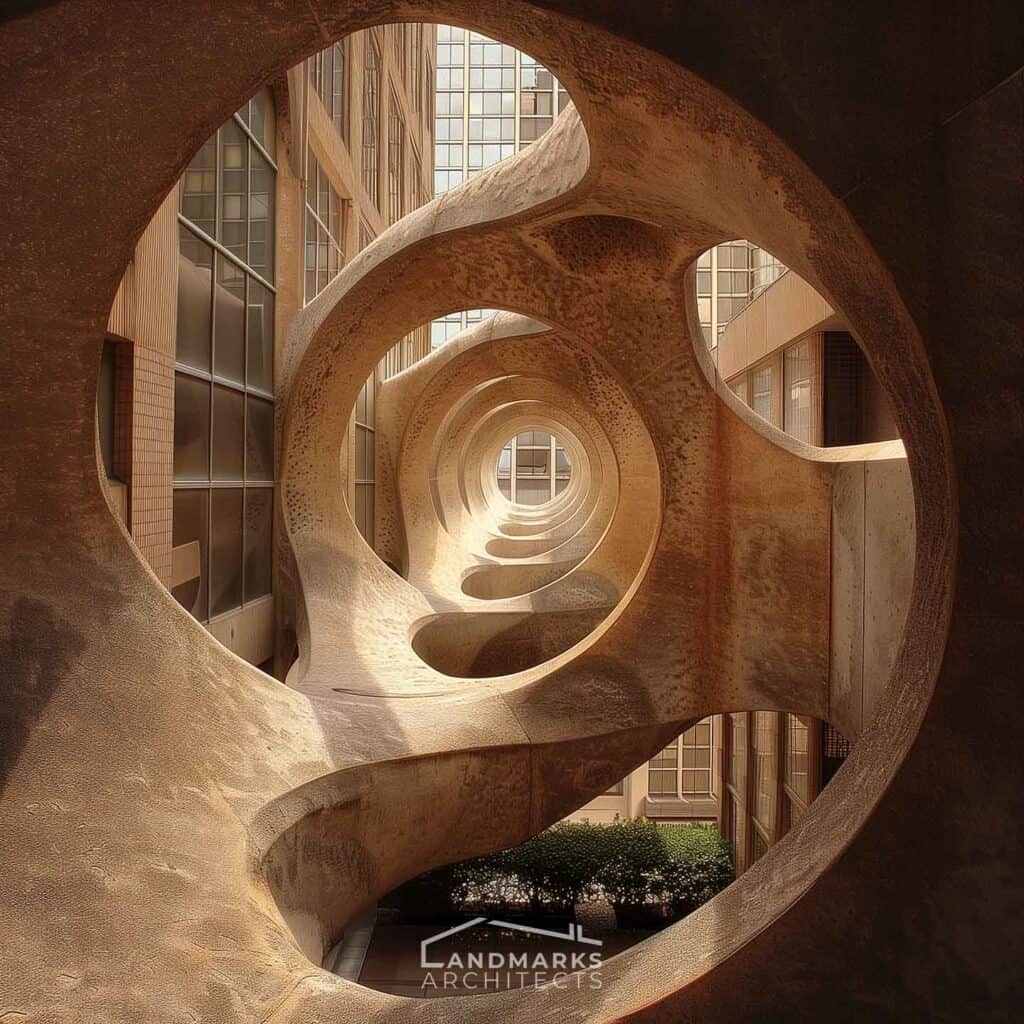
Organic forms play a crucial role in architecture by not only enhancing aesthetic appeal but also fostering a deeper connection between people and their surroundings. By integrating natural materials, shapes, and textures into architectural design, organic architecture creates spaces that feel harmonious and inviting. This emphasis on organic forms is especially important in today’s urban environments, where the rapid pace of development can sometimes lead to a sense of disconnection from nature. Through organic architecture, architects can create buildings and spaces that not only function effectively but also contribute to the overall well-being of their inhabitants, fostering a sense of unity with the natural world.
Origins and Philosophical Underpinnings
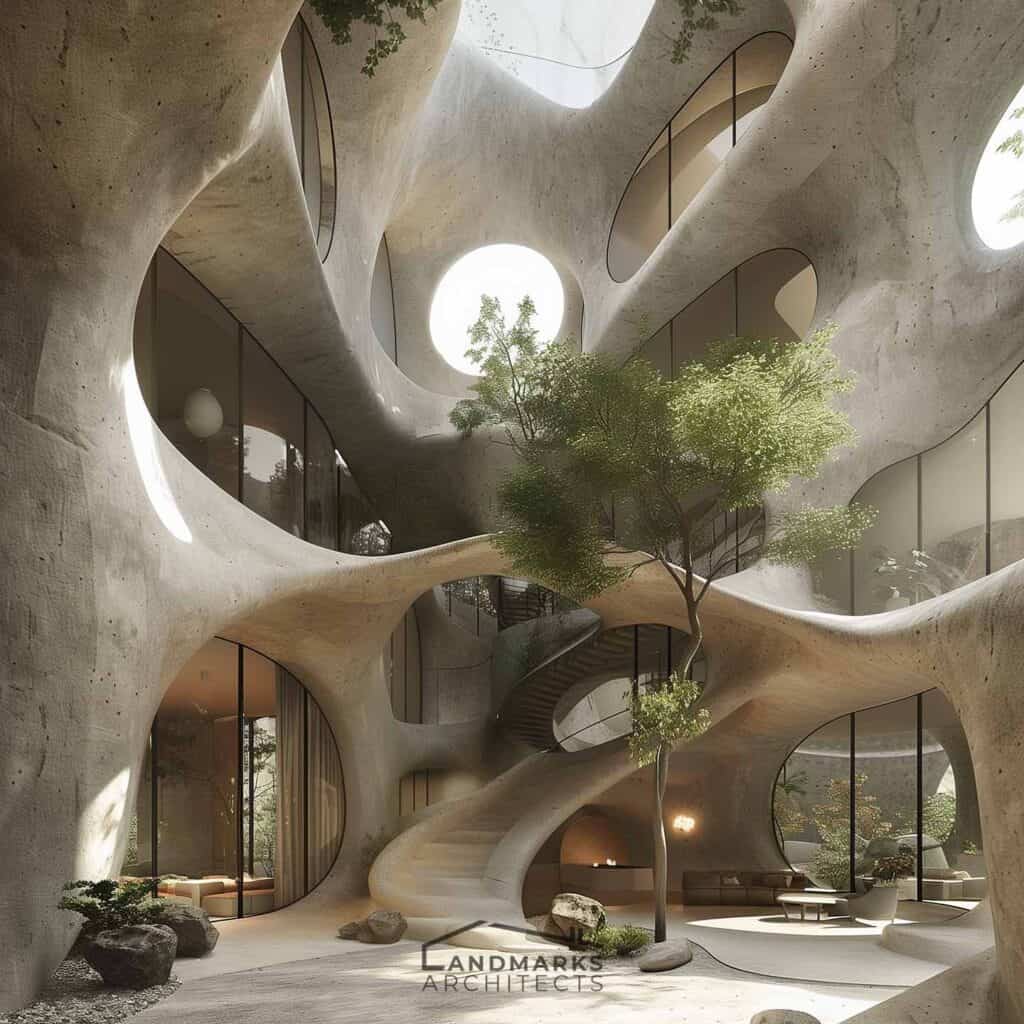
The roots of organic architecture can be traced back to the late 19th and early 20th centuries when architects began to reject the rigid geometric forms of the past in favor of more fluid and dynamic designs inspired by nature. The term organic architecture was first coined by the famous architect Frank Lloyd Wright.
Influenced by movements such as Romanticism and the Arts and Crafts movement, early proponents of organic architecture, like Frank Lloyd Wright, sought to create buildings that reflected the organic rhythms and patterns of the natural world.
Wright’s philosophy of organic architecture was deeply influenced by his reverence for nature and his belief in the interconnectedness of all things. He saw architecture not as separate from its environment, but as an integral part of it, with buildings seamlessly blending into their natural surroundings.
Principles of Organic Architecture

At the heart of organic architecture are principles of harmony with nature, fluidity, asymmetry, biomimicry, sustainability, and integration with the landscape. Buildings designed in this style often feature flowing lines and curves that mimic the natural contours of the land, as well as asymmetrical compositions that reflect the organic irregularities found in nature.
Biomimicry, or the imitation of natural forms and processes, is another key aspect of organic architecture, with architects drawing inspiration from the shapes, patterns, and structures found in the natural world.
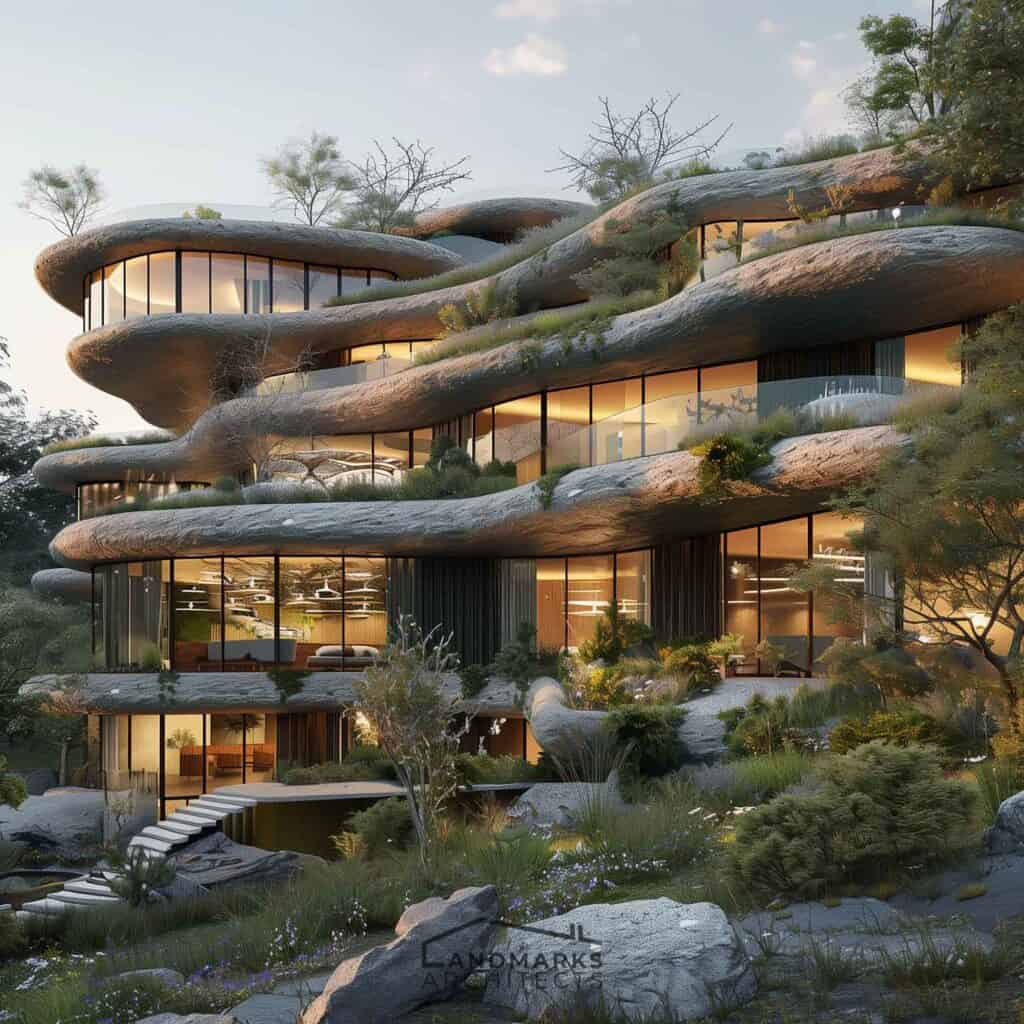
Sustainability is also a central tenet of organic architecture, with an emphasis on eco-friendly materials, passive design strategies, and renewable energy sources. By integrating buildings with their natural surroundings, organic architecture seeks to minimize the environmental impact of construction and create spaces that enhance rather than detract from the landscape.
Influential Architects and Examples
Throughout history, there have been many architects who have embraced the principles of organic architecture and left their mark on the built environment.
Frank Lloyd Wright: The Frank Lloyd Wright Foundation, widely recognized as the cornerstone of organic architecture, adeptly fused architectural creations with the natural world. Iconic structures like Fallingwater and the Guggenheim Museum stand as testaments to this seamless integration, epitomizing a symbiotic bond between built forms and their environment. Central to Wright’s ethos were organic principles, emphasizing a profound unity with nature and a reliance on natural materials.

Louis Sullivan: An American architect often referred to as the “father of modernism,” Louis Sullivan’s work anticipated many principles of organic architecture. Sullivan’s designs, such as the Carson, Pirie, Scott and Company Building in Chicago, emphasized the relationship between form and function, with ornamentation derived from natural motifs. His famous dictum, “form follows function,” encapsulates his belief in the organic unity of architecture and its surroundings.

Applications and Advantages

Organic form architecture can be applied to a wide range of building types, from residential homes to public buildings, museums, and cultural centers. One of the main advantages of organic architecture is its ability to create spaces that are both visually stunning and environmentally sustainable.
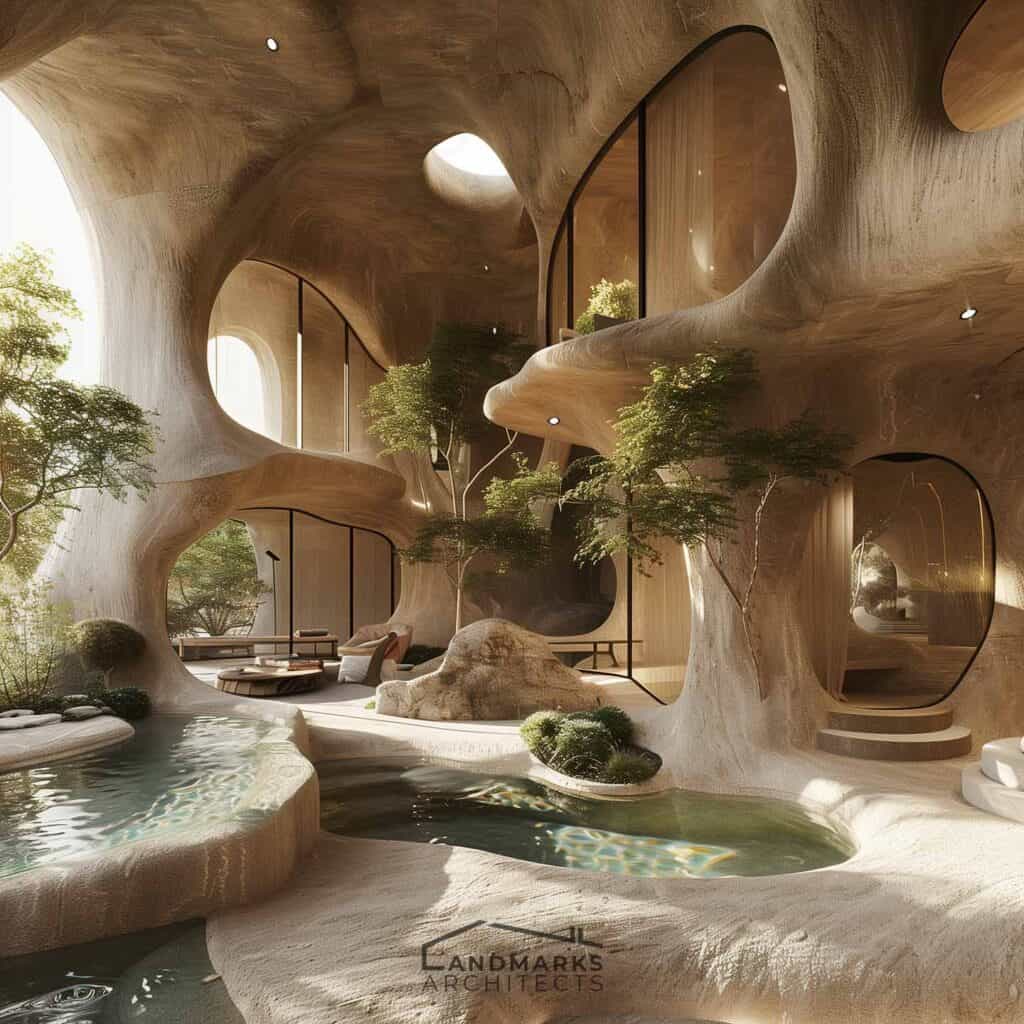
By using natural materials, passive design strategies, and renewable energy sources, organic buildings can reduce energy consumption, minimize waste, and promote a healthier indoor environment. Organic architecture, beyond its environmental advantages, also offers psychological benefits deeply intertwined with human life. Research indicates that interaction with natural forms and materials can alleviate stress, improve mood, and enhance overall well-being.
Challenges and Criticisms
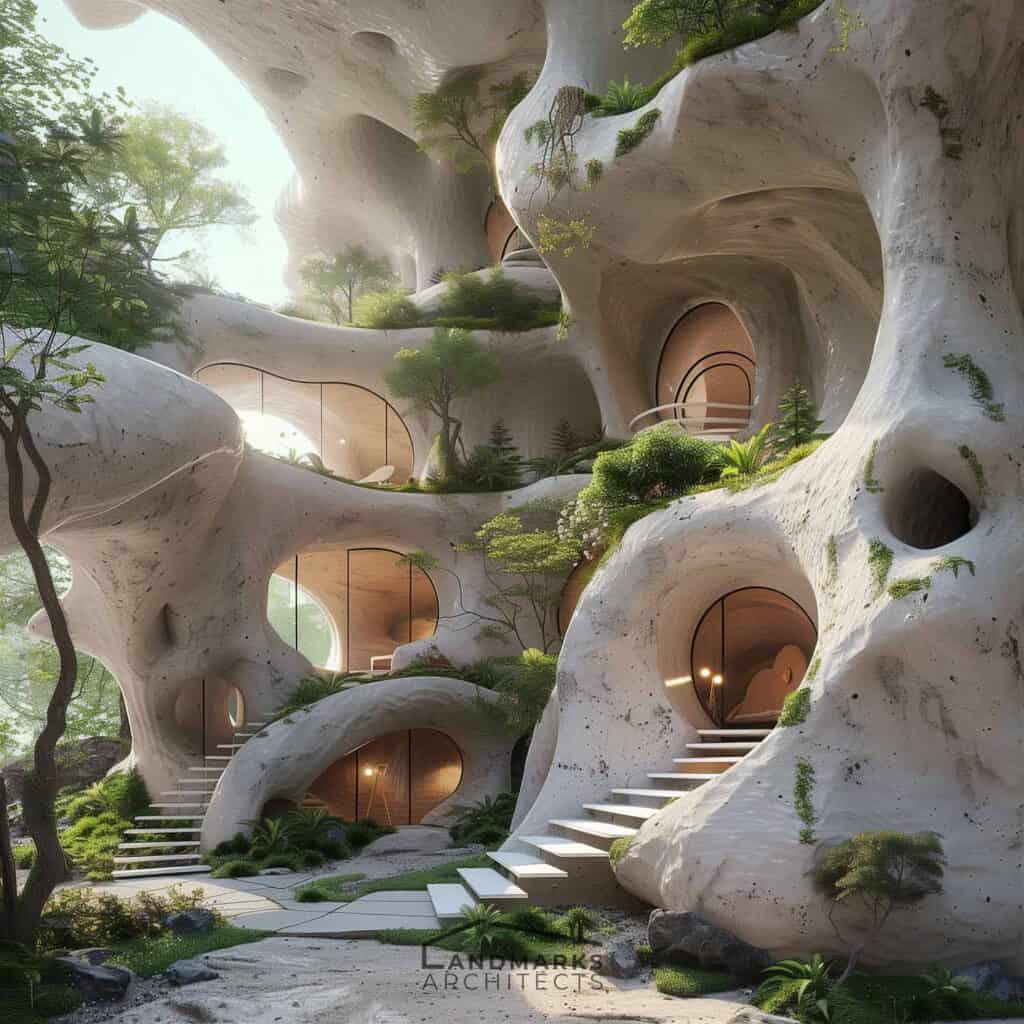
Despite its many virtues, organic form architecture also presents challenges and criticisms. One of the main challenges is structural complexity, particularly when it comes to integrating organic forms with conventional building techniques. This can result in higher construction costs and longer project timelines, making organic architecture less accessible to some clients.
In addition, there are concerns about the cultural and contextual appropriateness of organic architecture in certain settings. Critics contend that an imposed style, such as organic forms, may not consistently align with urban environments or culturally sensitive areas, prompting concerns regarding its practicality and feasibility in such contexts.
Organic Form Architecture: A Recap
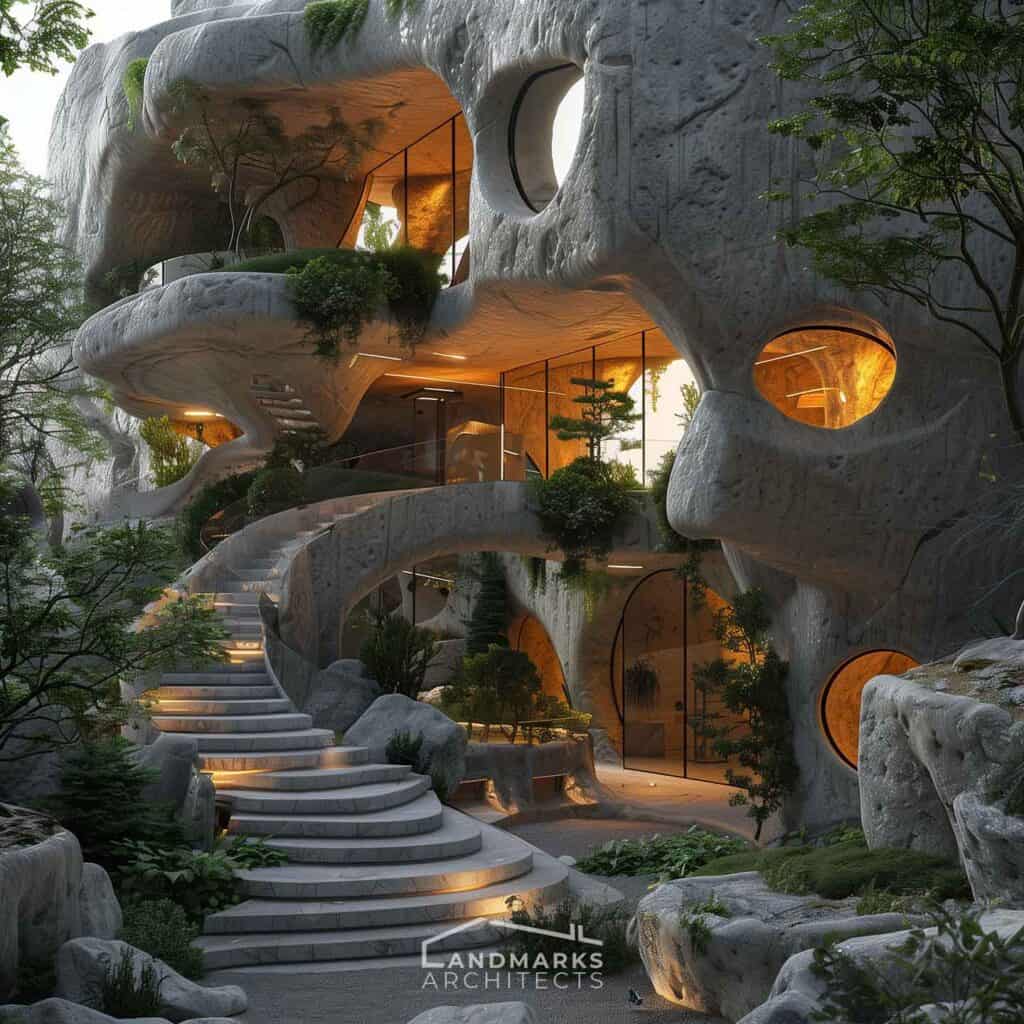
In conclusion, organic-form architecture continues to captivate architects, designers, and enthusiasts with its timeless beauty, sustainability, and connection to the natural world. By embracing the principles of organic architecture, we can create buildings and spaces that not only respect the environment but also enhance the human experience.
By blending natural elements, biomimetic strategies, and sustainable methodologies, the architectural style of organic architecture serves as a poignant reminder of our deep-rooted bond with the environment and underscores the significance of coexisting harmoniously with it.
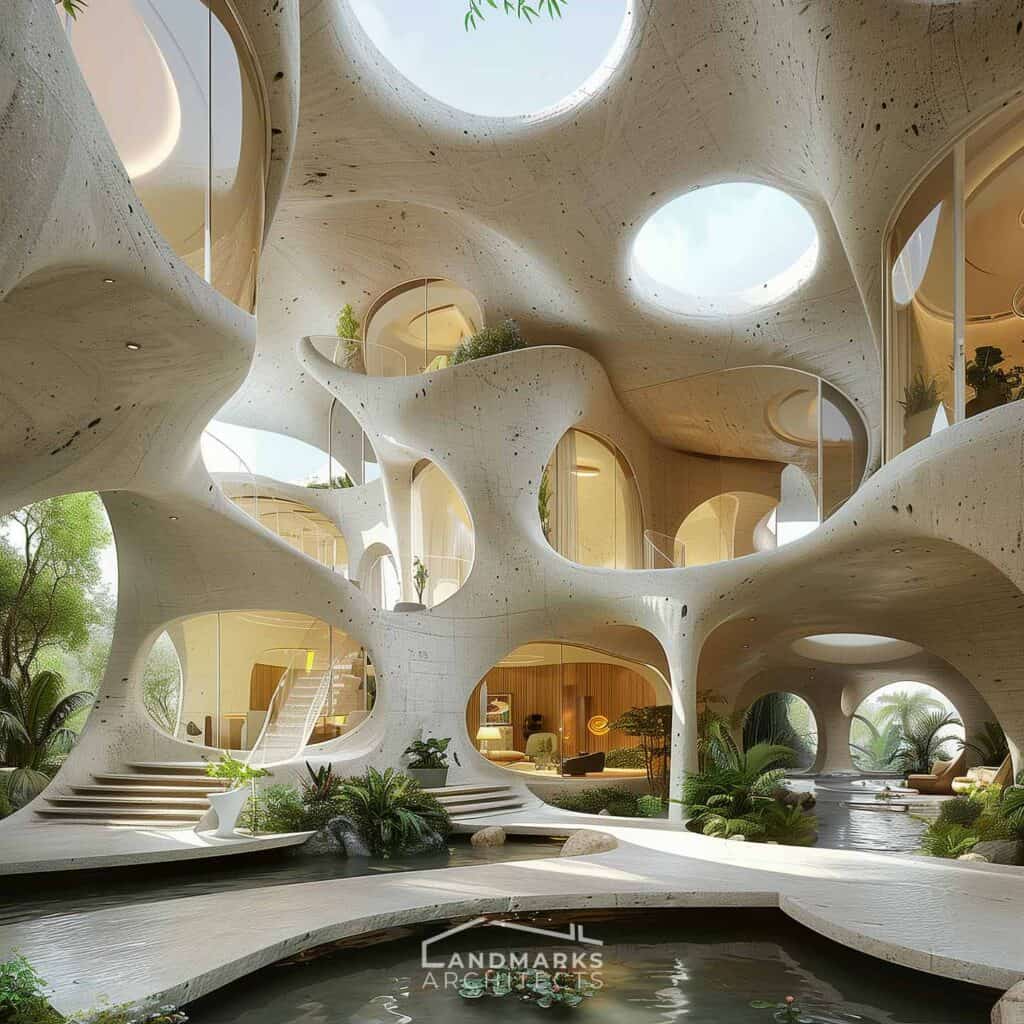
Looking ahead, modern architecture, by using the principles of organic architecture, is poised to become increasingly pivotal in molding the constructed landscape, providing groundbreaking answers to the dilemmas posed by urbanization, climate change, and environmental decline.









